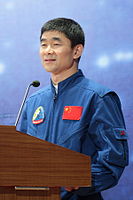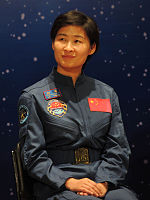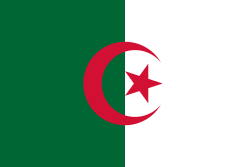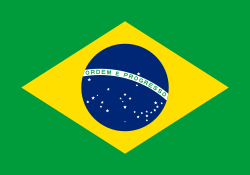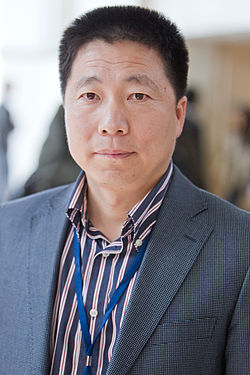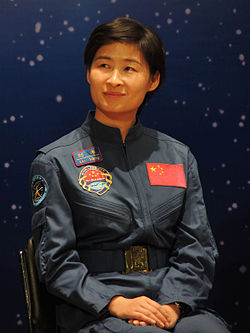Kinas nationella rymdstyrelse
Kinas nationella rymdstyrelse, (på kinesiska Zhongguo guojia hangtianju 中国国家航天局) är den civila kinesiska myndigheten ansvarig för Kinas rymdprogram, etablerad 22 april 1993. Rymdstyrelsen är även känd under sitt engelska namn China National Space Administration (CNSA). Myndighetens chef är sedan 2004 Sun Laiyan.
Historia
Folkets befrielsearmé grundade Kinas rymdprogram redan 1956 och programmet hade länge en militär karaktär. 1993 delades det dåvarande Ministeriet för rymdindustrin upp i Kinas nationella rymdstyrelse och Kinas rymdbolag, China Aerospace Science and Technology Corporation (CASC). Det förra skulle ansvara för politiken, medan det senare skulle ansvara för genomförandet. Detta arrangemang visade sig vara något otillfredsställande, eftersom dessa två byråer i själva verket var en stor byrå som delade både personal och ledning.[1]
Som en del av en massiv omstrukturering 1998 delades CASC upp i ett antal mindre, statligt ägda företag. Avsikten verkade ha varit att skapa ett system som liknar det som är karakteristiskt för västerländsk försvarsupphandling, där enheter som är statliga myndigheter, som fastställer operativ policy, sedan skulle lägga ut sina operativa krav till enheter som var statligt ägda, men inte regeringsledda.[1]
Sedan Wolf Amendment antogs 2011 har NASA tvingats av kongressen att implementera en långvarig uteslutningspolicy med CNSA sedan dess.
Funktion
CNSA etablerades som en statlig institution för att utveckla och uppfylla Kinas internationella åtaganden, med godkännande av den åttonde nationella folkkongressen i Kina (NPC). Den nionde NPC tilldelade CNSA rollen som en intern struktur för kommissionen för vetenskap, teknik och industri för det nationella försvaret (COSTIND). CNSA tar på sig följande huvudansvar: undertecknande av statliga avtal inom rymdområdet på uppdrag av organisationer, mellanstatliga vetenskapliga och tekniska utbyten, och även vara ansvarig för upprätthållandet av nationell rymdpolitik och förvaltning av den nationella rymdvetenskapen, teknologin och industrin.
Kina har undertecknat statliga rymdsamarbetsavtal med Argentina, Brasilien, Chile, Frankrike, Tyskland, Indien, Italien, Pakistan, Ryssland, Ukraina, Storbritannien, USA och några andra länder. Betydande framgångar har gjorts i det bilaterala och multilaterala och tekniska utbytet och samarbetet.[1]
Astronauter
2013 hade dessa elva kineser rest ut i rymden (foton i alfabetisk ordning):
- Jing Haipeng (景海鹏)
- Liu Boming (刘伯明)
- Liu Wang (刘旺)
- Liu Yang (刘洋)
- Yang Liwei (杨利伟)
- Zhai Zhigang (翟志刚)
- Zhang Xiaoguang (张晓光)
- Chen Dong (陈冬)
Referenser
- Den här artikeln är helt eller delvis baserad på material från engelskspråkiga Wikipedia, China National Space Administration, 12 februari 2024.
Noter
- ^ [a b c] ”Organization and Function”. China National Space Administration. Arkiverad från originalet den 28 februari 2008. https://web.archive.org/web/20080228194440/http://www.cnsa.gov.cn/n615709/n620681/n771918/index.html. Läst 9 mars 2008.
Externa länkar
| ||||||||||||||||||||
Media som används på denna webbplats
MAVEN at Mars, Artist's Concept. This artist's concept depicts NASA's Mars Atmosphere and Volatile EvolutioN (MAVEN) spacecraft near Mars. MAVEN is in development for launch in 2013 and will be the first mission devoted to understanding the Martian upper atmosphere. The mission's principal investigator is Bruce Jakosky from the Laboratory for Atmospheric and Space Physics at the University of Colorado.
The goal of MAVEN is to determine the role that loss of atmospheric gas to space played in changing the Martian climate through time. MAVEN will determine how much of the Martian atmosphere has been lost over time by measuring the current rate of escape to space and gathering enough information about the relevant processes to allow extrapolation backward in time.
NASA Goddard Space Flight Center in Greenbelt, Md. manages the project and will also build some of the instruments for the mission. In addition to the principal investigator coming from CU-LASP, the university will provide science operations, build instruments, and lead education/public outreach. Lockheed Martin of Littleton, Colo., is building the spacecraft and will perform mission operations. The University of California-Berkeley Space Sciences Laboratory is also building instruments for the mission. NASA's Jet Propulsion Laboratory, Pasadena, Calif., will provide navigation support, the Deep Space Network, and the Electra telecommunications relay hardware and operations.
For more information about MAVEN, visit www.nasa.gov/maven.The Flag of Europe is the flag and emblem of the European Union (EU) and Council of Europe (CoE). It consists of a circle of 12 golden (yellow) stars on a blue background. It was created in 1955 by the CoE and adopted by the EU, then the European Communities, in the 1980s.
The CoE and EU are distinct in membership and nature. The CoE is a 47-member international organisation dealing with human rights and rule of law, while the EU is a quasi-federal union of 27 states focused on economic integration and political cooperation. Today, the flag is mostly associated with the latter.
It was the intention of the CoE that the flag should come to represent Europe as a whole, and since its adoption the membership of the CoE covers nearly the entire continent. This is why the EU adopted the same flag. The flag has been used to represent Europe in sporting events and as a pro-democracy banner outside the Union.bendera Indonesia
Flag of Iran. The tricolor flag was introduced in 1906, but after the Islamic Revolution of 1979 the Arabic words 'Allahu akbar' ('God is great'), written in the Kufic script of the Qur'an and repeated 22 times, were added to the red and green strips where they border the white central strip and in the middle is the emblem of Iran (which is a stylized Persian alphabet of the Arabic word Allah ("God")).
The official ISIRI standard (translation at FotW) gives two slightly different methods of construction for the flag: a compass-and-straightedge construction used for File:Flag of Iran (official).svg, and a "simplified" construction sheet with rational numbers used for this file.
Flag of Israel. Shows a Magen David (“Shield of David”) between two stripes. The Shield of David is a traditional Jewish symbol. The stripes symbolize a Jewish prayer shawl (tallit).
Författare/Upphovsman: Tksteven, Licens: CC BY 3.0
LIU Wang visited to the Chinese University on 12 August 2012
Författare/Upphovsman: Dyor, Licens: CC BY-SA 3.0
Yang Liwei, first taikonaut (People Republic of China national in space), General Major of People's Liberation Army of China Airforce
Författare/Upphovsman: Johnson Lau, Licens: CC BY-SA 3.0
China astronaut Jing Haipeng. Taken at the Chinese University of Hong Kong, 6th Dec 2008
Författare/Upphovsman: Johnson Lau, Licens: CC BY-SA 3.0
China astronaut Zhai Zhigang. Taken at the Chinese University of Hong Kong, 6th Dec 2008
Författare/Upphovsman: Johnson Lau, Licens: CC BY-SA 3.0
China astronaut Liu Boming. Taken at the Chinese University of Hong Kong, 6th Dec 2008
Författare/Upphovsman: Tksteven, Licens: CC BY 3.0
LIU Yang visited the Chinese University of Hong Kong on 12 August 2012

